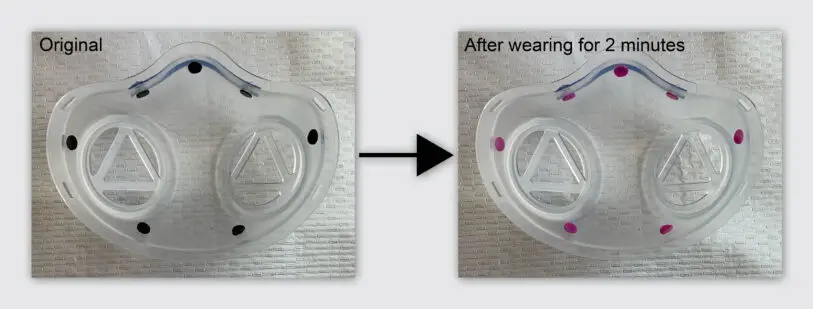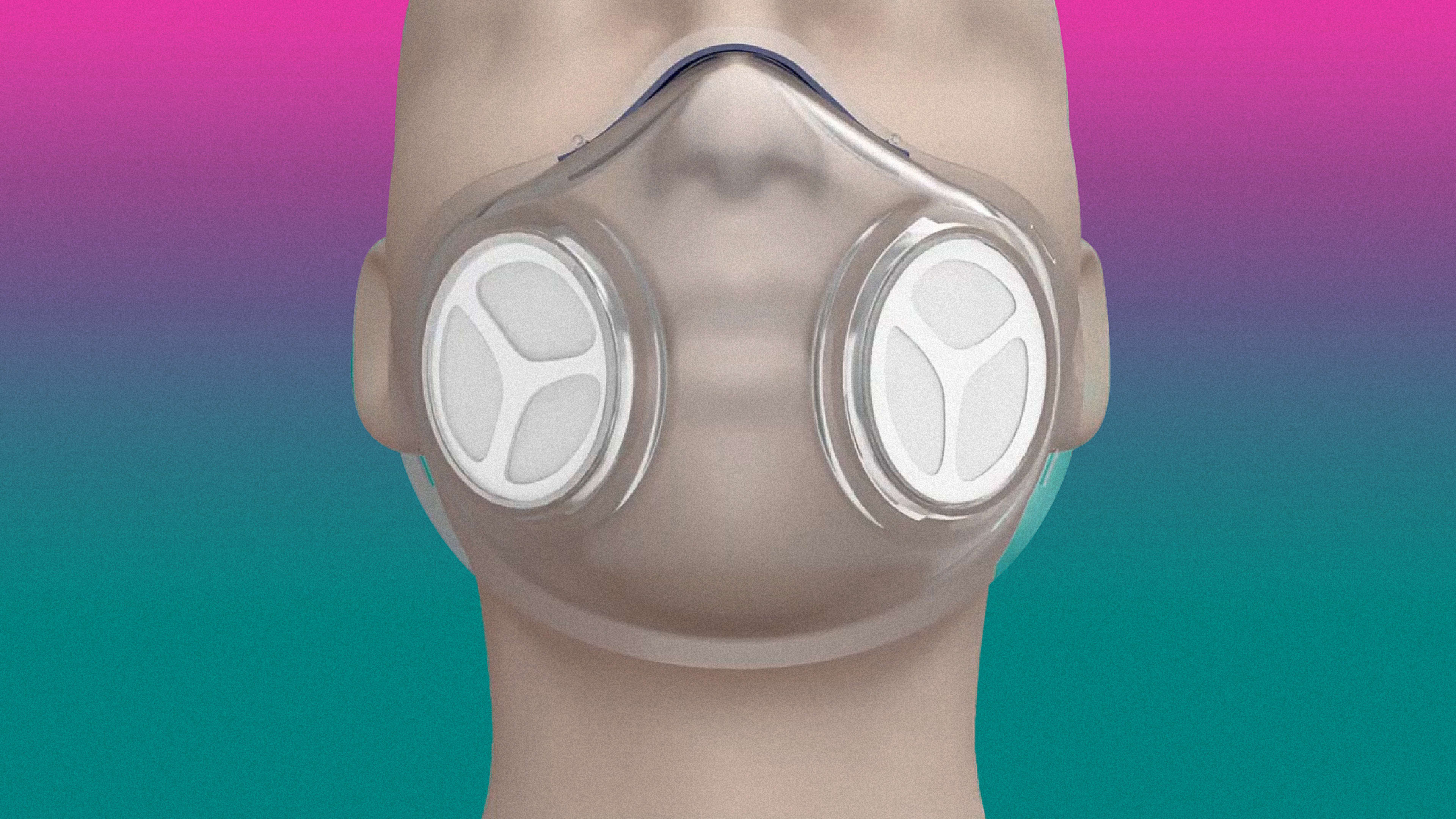The science shows that face masks are a key tool in mitigating the COVID crisis. But their effectiveness depends in part on how well they fit, and it can be hard to tell if you have done it right when you put it on. A new mask helps you know, by using sensors that send data to a smartphone app that change the color of heat-sensitive dots when the mask is properly positioned.
“When you put on the mask, if the edge is in contact with the skin, you will have that temperature change indicating that you have contact,” says Giovanni Traverso, a gastroenterologist and biomedical engineer at Brigham and Women’s Hospital and professor at MIT who is part of a team that developed the new respirator. “If not, then there won’t be that color change, and you can tell immediately.”

The new mask, called the TEAL respirator (“transparent, elastomeric, adaptable, long-lasting”), attempts to solve those problems. The main portion of the mask can be safely sterilized using rubbing alcohol, a microwave, or multiple other methods, while smaller filters are swapped out. The most recent study showed, among other things, that can be reused 100 times. It’s clear, so patients who can’t hear well can follow a doctor’s lips. It’s made of silicone that conforms comfortably to the face. It’s breathable. In a study with healthcare workers at Brigham and Massachusetts General Hospital, most workers preferred it; in fit tests, it also fit different face shapes well.
Sensors in the filters detect the rate of breathing, the temperature of the breath, and the pressure of each inhalation and exhalation, then send that data to an app. In a hospital, the sensors could also send data to an administrator to monitor a larger team. “We showed that using the sensors, we could easily distinguish if there was a leak or not in the mask,” Traverso says. “That really helps inform the user that either the filter is actually saturated, or there’s essentially a short circuit if you have a leak and don’t have a good fit, and it can prompt the user to readjust the mask.” The heat-sensitive dots provide additional feedback (the researchers are also testing a version of the heat-sensitive coating that includes a full outline around the mask). It’s helpful both as someone puts on the mask and hours later, when the mask may have slightly shifted and they can get a warning to put it back in place.
The team is working to bring the mask to market with a newly formed company called TEAL Bio, and is currently working on getting regulatory approval—potentially an emergency use authorization—and working to prepare the final design for manufacturing at scale, so it can get both to healthcare workers and the general public. They’re also continuing to study the benefits. “One of the things we’re doing is quantifying the burden of waste, and the economic burden, and looking at how reusable systems can help with that,” Traverso says.
Recognize your brand’s excellence by applying to this year’s Brands That Matter Awards before the early-rate deadline, May 3.
